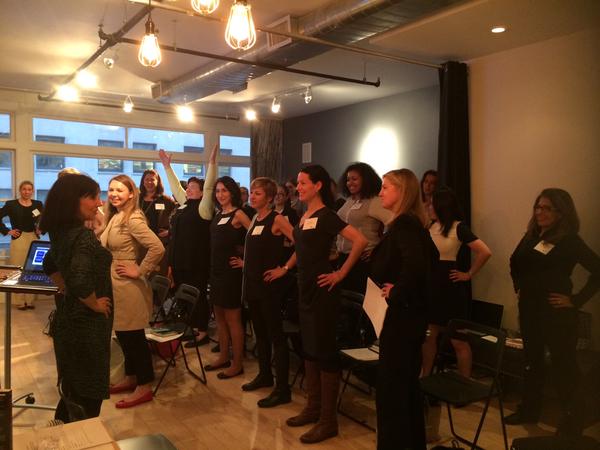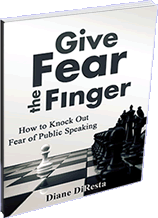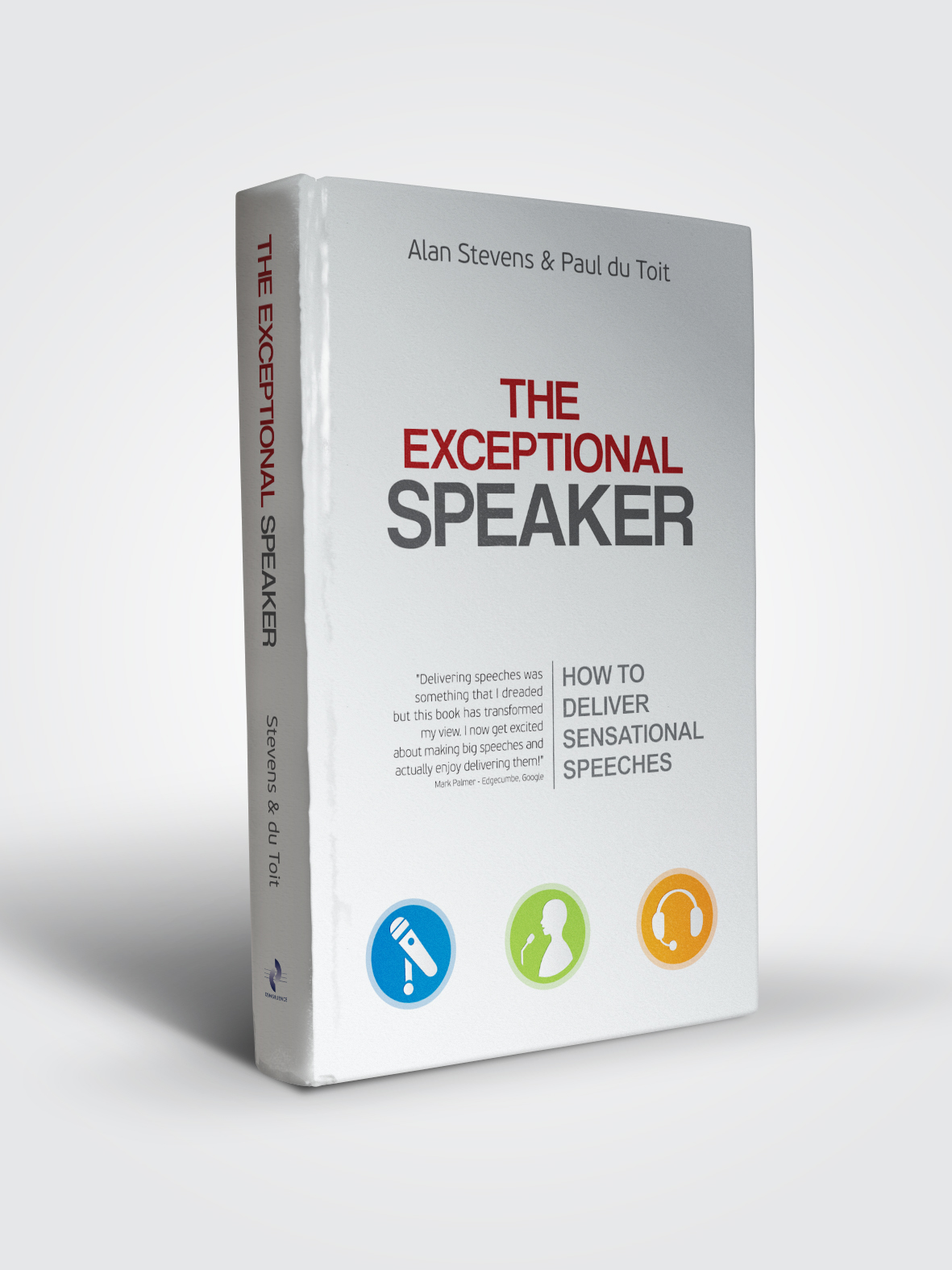I was working with a client on her presentation and executive presence. She was not your traditional looking leader. During the coaching session she asked me a question I wasn’t expecting. She inquired, “Can I have executive presence and pink hair?” How times have changed! Ten years ago we wouldn’t be asking about pink hair. In New York City I was accustomed to all kinds of artistic non-conformist looks. But not at work-unless it was the fashion or entertainment industry.
The workplace was different. Norms were different. Standards were set by corporations and dress codes were part of the policies and procedures manuals.
That’s not to say that rules weren’t challenged. It started with the IT departments where the uniform became jeans. Companies started to relax dress codes in the mid 1990s and business suits morphed into “business casual.” The challenge was that nobody knew what that meant. As a communications strategist and presentation coach, I trained employees to create a powerful presence. Frustrated managers would ask me to explain how to dress for the office as employees became more lax wearing mesh shirts and flip flops to work. A law firm asked me to tell one female employee not to wear sleeveless dresses. In 2007, one company I consulted for actually created a pictorial brochure of what was acceptable workplace attire.
Fast forward to today where individualism and diversity rule. Culture is expressed with clothing and hairstyles. The largest demographic are millennial workers who value freedom of expression, and lifestyle over conformity.
In my past life training people to be powerful presenters, I always discussed physical appearance and the power of the visual impression. Today, not so much. Amazon invited me to speak to their women leaders at a luncheon for high achievers. I was warned by my contact not to mention dress standards. Women at the company were free to wear hoodies and dress casually,
As Clubhouse moderator and former attorney Scott Mason noted, there can be major legal implications with overly restrictive policies around personal presentation. The question becomes where is the line between professionalism and individual expression? Can you be “quirky” and credible?
Can You Have Executive Presence and Pink Hair?
This question was put to the test in the Clubhouse room, Confidence, Clarity and Charisma moderated by Diane DiResta and S. Scott Mason. The audience consisted of men and women from the military, the private sector and entrepreneurs who were both quirky and classic. A linkedin poll answered the question with three choices:
Yes
No
Depends on the Industry
Surprisingly, 54% voted YES. Professional speaker, Lisa Braithwaite is challenging the status quo with the hashtag #This is What Professional Looks Like. She has shaved pink hair, big earrings, bright colors, large red-framed eyeglasses and no make-up. One man in the military was open to individual expression but said he didn’t want to see pink hair in the military because that would be a target. All agreed that wearing a uniform for the military and police had a purpose to communicate authority.
Whether you can establish leadership with pink hair depends on how you define Executive Presence. Most of the respondents believed that it’s how you command the room and conduct yourself that determines executive presence. It requires confidence. But is there a double standard for men and women? Do women have to look more conservative or “establishment” in order to convey executive presence? Case in point: There was an experiment where two identical resumes were distributed. One had a female name and another had a male name. When reviewing the resumes the consensus was that the resume of the male applicant was more positively received. They perceived the male job candidate to be more competent. Yet, it was the same resume! Considering the occurrence of unconscious bias in the workplace, should women have pink hair at higher leadership levels? Will it undermine confidence in their leadership in more conservative industries? We can create policies that extol diversity but we can’t legislate feelings and perception. While the Clubhouse participants believed pink hair is acceptable, the jury is still out. Does appearance affect trust? After all, Mark Zuckerberg wears a hoodie as the CEO but he wore a suit to testify before the Senate.






 My colleague
My colleague  Speaking is a leadership skill
Speaking is a leadership skill Love Story was a popular move in 1970. It starred Ryan O'Neill and Ali McGraw. In one scene they have a fight and go their separate ways. O'Neill finds McGraw after he cools off and apologizes for the fight. She stops him and says through her tears, "Love means never having to say you're sorry." I don't know if most people in conflict would agree with that.
What people may agree with is the overuse of the word "Sorry" in the workplace. This is especially prevalent among women. When I speak to organizations about
Love Story was a popular move in 1970. It starred Ryan O'Neill and Ali McGraw. In one scene they have a fight and go their separate ways. O'Neill finds McGraw after he cools off and apologizes for the fight. She stops him and says through her tears, "Love means never having to say you're sorry." I don't know if most people in conflict would agree with that.
What people may agree with is the overuse of the word "Sorry" in the workplace. This is especially prevalent among women. When I speak to organizations about  Fear of speaking
Fear of speaking
 FEAR means False Evidence Appearing Real. I once said that to a group of people and a man in the audience retorted, "That's your definition? My definition is 'Forget everything and run!'" (That's the clean version. He actually used another F word).
But isn't it true? We abandon our rational mind and allow the amygdala or reptile brain to take over. This is the place where fear resides. Our eyes first scan for threat. For many public speakers, an audience of strangers is threatening. And that puts them in a state of fear. I discovered that nervous public speakers live in the future of wild imaginings. They focus on what could go wrong. "I hope I don't trip." "What if I lose my train-of-thought?"
FEAR means False Evidence Appearing Real. I once said that to a group of people and a man in the audience retorted, "That's your definition? My definition is 'Forget everything and run!'" (That's the clean version. He actually used another F word).
But isn't it true? We abandon our rational mind and allow the amygdala or reptile brain to take over. This is the place where fear resides. Our eyes first scan for threat. For many public speakers, an audience of strangers is threatening. And that puts them in a state of fear. I discovered that nervous public speakers live in the future of wild imaginings. They focus on what could go wrong. "I hope I don't trip." "What if I lose my train-of-thought?" Do you want to be an exceptional speaker? My friends Alan Stevens and Paul Du Toit, from the U.K. have just published a book that shows you how. I saw them at the
Do you want to be an exceptional speaker? My friends Alan Stevens and Paul Du Toit, from the U.K. have just published a book that shows you how. I saw them at the  How did a college intern trump me in public speaking?
My marketing intern from Berkley College in New York City is from Korea and she is studying marketing as well as working on her English language skills. That was one of the reasons she was interested in interning with
How did a college intern trump me in public speaking?
My marketing intern from Berkley College in New York City is from Korea and she is studying marketing as well as working on her English language skills. That was one of the reasons she was interested in interning with 

 I recently read an article by Dylan Kendall entitled, "
I recently read an article by Dylan Kendall entitled, " "Ask any businessman or woman and they will tell you the same thing – confidence is a vital ingredient in the recipe for success. In other words, if you want to be really good at anything - no matter what walk of life you are involved in - you need to have belief in yourself and your abilities."
"Ask any businessman or woman and they will tell you the same thing – confidence is a vital ingredient in the recipe for success. In other words, if you want to be really good at anything - no matter what walk of life you are involved in - you need to have belief in yourself and your abilities."